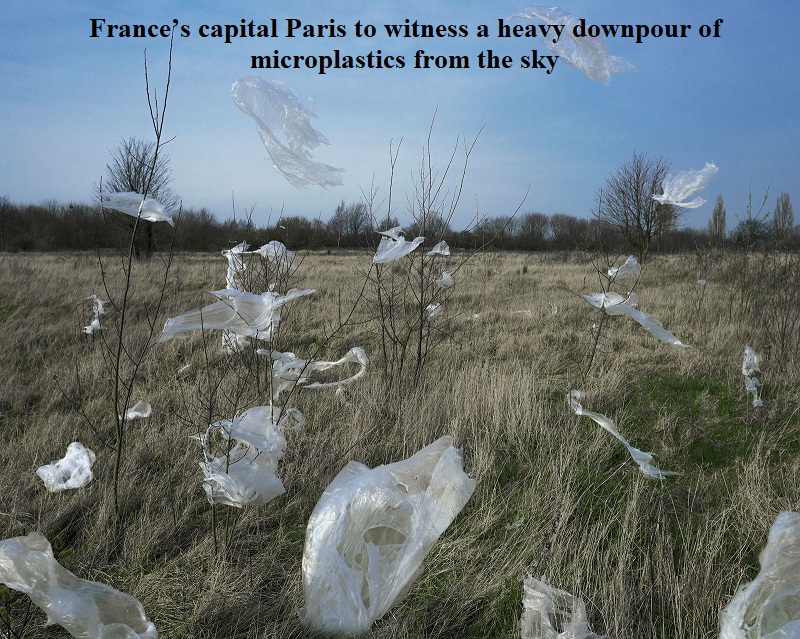
In an unprecedented occurrence, Paris, the capital of France, is expected to experience a heavy downpour of microplastics rather than water droplets on Monday. Scientists involved in the study have predicted that between 40 and 48 kilograms (88 and 106 pounds) of free-floating plastic particles will hover over the skies of Paris every 24 hours. This unique weather phenomenon is accompanied by the presence of diplomats from more than 175 countries converging in Paris for a five-day meeting aimed at developing an international legally binding agreement on plastic pollution.
The scientists also noted that if there is heavy rainfall, the likelihood of “plastic fall” will increase up to tenfold. This forecast serves as a wake-up call for negotiators, drawing attention to the urgent need for action. Marcus Gover, the head of plastics research at the Minderoo Foundation in Perth, Australia, emphasized the detrimental effects of plastic particles on both the environment and human health, as they break down and enter our bodies.
Research has revealed that the majority of plastic particles in the catchment area of Paris, covering 2,500 square kilometers (965 square miles), consist of nylon and polyester, likely originating from clothing. Other sources include tire particles, which are released when vehicles brake. It is estimated that up to 10 metric tons of microplastic fibers settle in the Paris area annually.
The current forecast specifically focuses on larger particles, predominantly synthetic fibers with a length of at least 50 microns. Comparatively, human hair has a width of about 80 microns. The study was conducted by researchers from the Minderoo Foundation who have been collecting samples in Paris since 2015 and analyzing them in the laboratory. Similar findings have been replicated in several other cities worldwide.
Microplastics have emerged as a significant global health hazard, with their presence observed in rainwater, the food chain, and oceans. It is estimated that between 15 and 51 trillion particles float near the surface of the oceans. The rapid infiltration of microplastics into the food chain has perplexed scientists in recent years, as research consistently demonstrates their omnipresence and persistence.

Post Your Comments